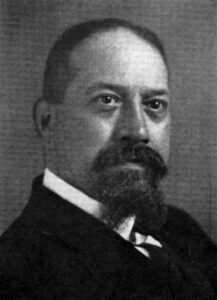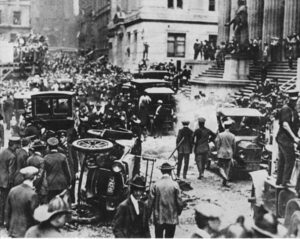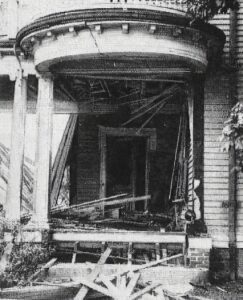anarchist bombings
 In late April 1919, anarchists, a group of people who believe that “society should have no government, laws, police, or any other authority. Most anarchists in the US advocate change through non-violent, non-criminal means. However, a small minority believed change could only be accomplished through violence and criminal acts” decided to take matters into their own hands. If you ask me, their actions proved without a doubt, why we need thinks like government (but not BIG government), laws, police, and other authority figures. In these bombings, radicals mailed over 30 booby trap dynamite-filled bombs to prominent politicians and appointees, including the Attorney General of the United States, as well as justice officials, newspaper editors, and businessmen, such as John D Rockefeller, and the mayor of Seattle, Washington. All but one of the bombs were addressed to high-level officials, but strangely, one bomb was notably addressed to the home of a Federal Bureau of Investigation field agent, Rayme Weston Finch, who had been tasked with investigating the Galleanists, and who in 1918 had arrested two prominent Galleanists while leading a police raid on the offices of their publication Cronaca Sovversiva. No one was killed in these bombings, but unfortunately, one senator’s maid lost her hands.
In late April 1919, anarchists, a group of people who believe that “society should have no government, laws, police, or any other authority. Most anarchists in the US advocate change through non-violent, non-criminal means. However, a small minority believed change could only be accomplished through violence and criminal acts” decided to take matters into their own hands. If you ask me, their actions proved without a doubt, why we need thinks like government (but not BIG government), laws, police, and other authority figures. In these bombings, radicals mailed over 30 booby trap dynamite-filled bombs to prominent politicians and appointees, including the Attorney General of the United States, as well as justice officials, newspaper editors, and businessmen, such as John D Rockefeller, and the mayor of Seattle, Washington. All but one of the bombs were addressed to high-level officials, but strangely, one bomb was notably addressed to the home of a Federal Bureau of Investigation field agent, Rayme Weston Finch, who had been tasked with investigating the Galleanists, and who in 1918 had arrested two prominent Galleanists while leading a police raid on the offices of their publication Cronaca Sovversiva. No one was killed in these bombings, but unfortunately, one senator’s maid lost her hands.
With the epic failure of the first bombings fresh in their minds, the anarchists decided to try again. On June 2, 1919, in seven US cities, all within approximately 90 minutes of each other, bombs once again rock the area. These bombs were much bigger. Explosions took place in some of the most significant urban areas in America, including New York, Boston, Pittsburgh, Cleveland, Washington DC, Philadelphia, and Patterson, New Jersey. It is believed that the bombers were most likely disciples of Luigi Galleani, an extremely radical anarchist who pushed for violence to rid the world of laws and capitalism. The bombs exploded on June 2 were much larger than those sent in April. They comprised up to 25 pounds of dynamite packaged with heavy metal slugs, which were designed to act as shrapnel. The bombs were sent to government officials who had endorsed anti-sedition laws and deportation of immigrants suspected of crimes or associated with illegal movements, as well as judges who had sentenced anarchists to prison.
One of the bombs was set off by a militant anarchist named Carlo Valdinoci, who was a former editor of the Galleanist publication Cronaca Sovversiva and close associate of Luigi Galleani. Sovversiva planted the bomb, but as he as he set it, it blew up the front of newly appointed Attorney General A Mitchell Palmer’s home in Washington, DC. Unfortunately for Sovversiva, the bomb exploded too early, and he was killed in the very blast he created. At the time, a young Franklin and Eleanor Roosevelt lived across the street and were also shaken by the blast. That bombing was just one in a series of coordinated attacks that day on judges, politicians, law enforcement officials, and others in eight cities nationwide.
Within minutes of the bombing of US Attorney General Palmer’s home, more were exploding in other cities, including Philadelphia, Pennsylvania. Here, two bombs exploded within seconds of each other under the porch of the rectory of the Our Lady of Victory Catholic Church, caving in the porch and shattering every window in the rectory and those in the basement. The church was still smoldering when another bomb exploded less than a mile away at the home of Philadelphia jeweler Louis Jajieky. That also seems like an unlikely target, given the political nature of most of the bombs. The interior of the Jajieky residence was utterly demolished, leaving only the exterior four walls standing. 
While the anarchists were persistent, they were not especially “good” anarchists. During these bombings and simultaneous explosions in six other cities, none of the men who were being targeted were killed, but one bomb took the life of New York City night watchman William Boehner. Each of the bombs was delivered with several copies of a pink flyer titled “Plain Words,” which read, “War, Class war, and you were the first to wage it under the cover of the powerful institutions you call order, in the darkness of your laws. There will have to be bloodshed; we will not dodge; there will have to be murder: we will kill because it is necessary; there will have to be destruction; we will destroy to rid the world of your tyrannical institutions.”
It was discovered that the flyer was printed in a printing shop operated by two anarchists, Andrea Salsedo, who was a typesetter, and Roberto Elia, who was a compositor. Bothe of them were known Galleanists. Rather that go to jail, Salsedo committed suicide. Elia was given the opportunity to testify about his role, and thereby avoid deportation, but he refused the offer. Unfortunately, the prosecutors could not obtain enough evidence to proceed with a criminal trial. Authorities continued to deport known Galleanists using the Anarchist Exclusion Act and related statutes.
The predecessor to the FBI, the federal investigation in Philadelphia, headed by Special Agent Todd Daniel and the Bureau of Investigation’s Acting Director, William Flynn had been investigating these anarchists. Days after the bombings, Special Agent Daniel said, “The terrorist movement is national in scope, and its headquarters may be located in this city [Philadelphia].” Daniel also noted the large number of “anarchists in this city and so many places used by them for meeting places.” Daniel’s first thought was that the perpetrators of the Philadelphia bombings were members of the Industrial Workers of the Word (a leftist union that embraced socialistic principles). On June 5, federal and local investigators were tracking down members of the “bomb-throwing squad,” which was said to have included women. They had 12 radicals suspected of having a hand in the city’s attacks under constant surveillance.
At the time of the bombings, there was already a lot of anxiety in America. The world was in the middle of a deadly wave of the pandemic flu, the Bolshevik Revolution in Russia, and the ensuing over-hyped “Red Scare,” and sometimes violent labor strikes across the country. The attacks it engendered angered Americans. People  wanted answers and they wanted a severe response. The Attorney General, looking to make a bid for the presidency, didn’t want to stir up a revolution, so he was ready to oblige. He created a small division to gather intelligence on the radical threat and placed a young Justice Department lawyer named J Edgar Hoover in charge. Hoover collected and organized every intelligence gathered by the Bureau of Investigation (the FBI’s predecessor) and other agencies to identify anarchists most likely involved in violent activity. Even with all the “investigating,” the bombings were never officially pinned on anyone. They did arrest, under recently passed laws like the Sedition Act, suspected radicals and foreigners identified by Hoover’s group, including well-known leaders Emma Goldman and Alexander Berkman. With much public fanfare in December, several radicals were put on a ship, dubbed the “Red Ark” or “Soviet Ark” by the press, and deported to Russia. Basically, that ended all the repercussions over the 1919 Anarchist Bombings.
wanted answers and they wanted a severe response. The Attorney General, looking to make a bid for the presidency, didn’t want to stir up a revolution, so he was ready to oblige. He created a small division to gather intelligence on the radical threat and placed a young Justice Department lawyer named J Edgar Hoover in charge. Hoover collected and organized every intelligence gathered by the Bureau of Investigation (the FBI’s predecessor) and other agencies to identify anarchists most likely involved in violent activity. Even with all the “investigating,” the bombings were never officially pinned on anyone. They did arrest, under recently passed laws like the Sedition Act, suspected radicals and foreigners identified by Hoover’s group, including well-known leaders Emma Goldman and Alexander Berkman. With much public fanfare in December, several radicals were put on a ship, dubbed the “Red Ark” or “Soviet Ark” by the press, and deported to Russia. Basically, that ended all the repercussions over the 1919 Anarchist Bombings.

